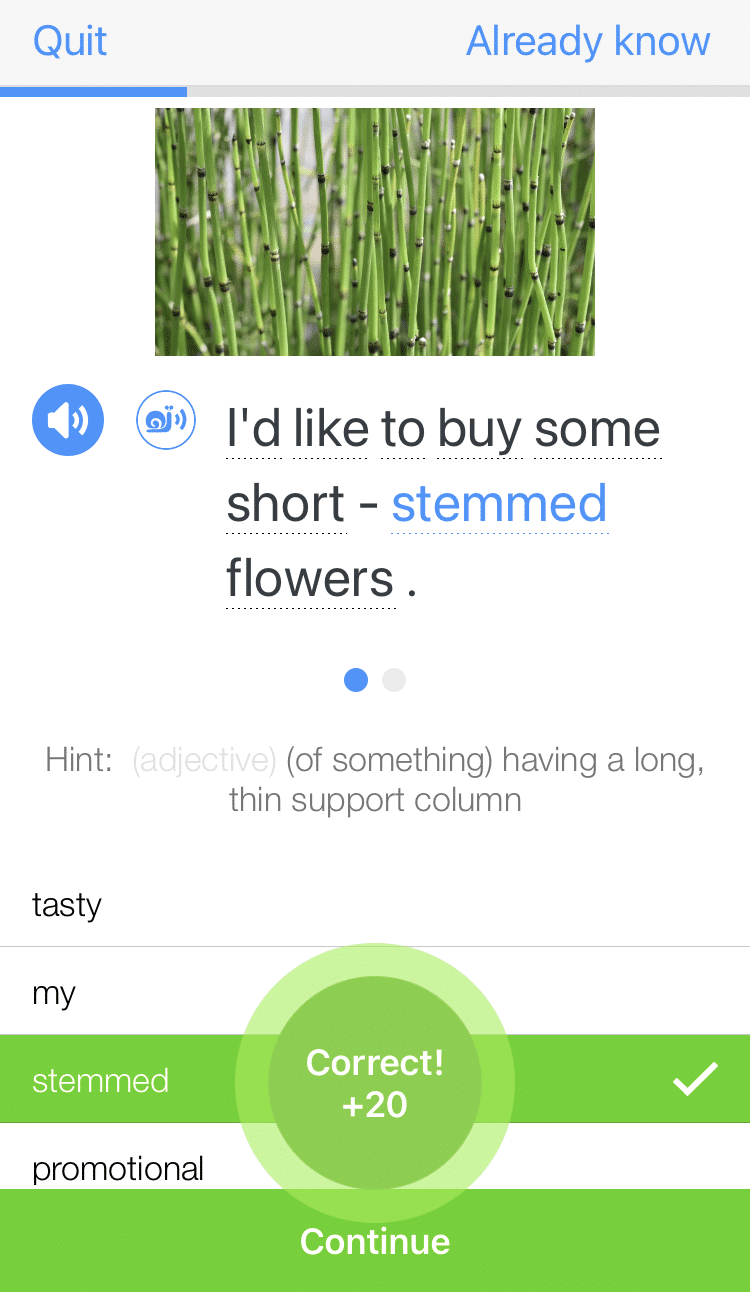9 Popular Songs for Teaching English

Songs are a fantastic way to help students work on different elements of language learning. There are many different ways to use songs in the classroom, from sing-a-longs to more structured listening exercises.
Let’s explore nine popular songs you can use to teach various aspects of the English language, all divided by language levels. With options for any learner, you can’t go wrong by adding some music to your ESL classroom.
Contents
- “Do You Like Bananas?”
- “Friday I’m in Love” by The Cure
- “My Favorite Things” from “The Sound of Music”
- “Somebody That I Used to Know” by Gotye and “Call Me Maybe” by Carly Rae Jepsen
- “All My Loving” by The Beatles
- “Counting Stars” by OneRepublic
- “If I Were A Boy” by Beyoncé
- “Across the Universe” by The Beatles
- And One More Thing...
Download: This blog post is available as a convenient and portable PDF that you can take anywhere. Click here to get a copy. (Download)
“Do You Like Bananas?”
Teaching Point: Yes/No questions
“Do You Like Bananas?” is a great song for teaching yes/no questions to beginners and kids. The lyrics go through a series of questions beginning with “Do you like…” and then answer with “Yes, I do,” or “No, I don’t.” Most of the elements in the song are food vocabulary words, so it’s ideal for introducing and reinforcing this vocabulary.
Play the song once or twice and then have students write their own “Do you like…” questions. Sing the song together as a class and call on students at random to insert a food item or activity to be asked about. Follow this musical activity with a worksheet of yes/no questions or a pair work activity to reinforce their learning.
“Friday I’m in Love” by The Cure
Teaching Point: Days of the week
This classic rock song is great for learning the days of the week. For true beginners that are learning this vocabulary, ask them to chime in when the days are sung. This is a fun way to reinforce what they’ve learned.
For more advanced students, you can use it as a jumping-off point to have students make their own sentences about what they do on each day of the week. Be sure to closely examine the lyrics for new vocabulary, helping them truly understand the song’s words before moving on to making their own sentences.
“My Favorite Things” from “The Sound of Music”
Teaching Point: General vocabulary
This poetic song offers useful vocabulary practice for beginners. You can have younger students draw pictures of one of the things that Maria says she likes, for example, “whiskers on kittens” or “brown paper packages tied up with string.” Have each student contribute a picture, then stand in a line and hold up their picture when their lyric is being sung.
“My Favorite Things” is also a great song to get students talking about things they enjoy. Have them adapt the song to their own favorite things. You can either have them write out the song themselves or give them sheets with blanks to fill in.
“Somebody That I Used to Know” by Gotye and “Call Me Maybe” by Carly Rae Jepsen
Teaching Point: Past constructions
Use “Somebody that I Used to Know” or “Call Me Maybe” to review different past constructions with intermediate students. Lyrics like the following allow them to think about which past tense is appropriate to use and why:
No you didn’t have to stoop so low
Have your friends collect your records and then change your number
I guess that I don’t need that though
Now you’re just somebody that I used to know
(From “Somebody that I Used to Know”)
I wasn’t looking for this
But now you’re in my way
Your stare was holding
Ripped jeans
Skin was showing
(From “Call Me Maybe”)
To use these songs efficiently, make worksheets in advance with the lyrics printed and the appropriate past construction removed. Replace these removed past constructions with a blank, accompanied by the infinitive verb in parentheses. Students should fill in the correct answer. Once they’ve finished, verify answers by playing the song (and encourage them to sing along!).
“All My Loving” by The Beatles
Teaching Point: Future simple
“All My Loving” uses the auxiliary “will” construction in the future fairly consistently, making it ideal for practicing this future form. Make a worksheet as you did for the last exercise, replacing future tense conjugated verbs with blanks and the infinitive verb in parentheses.
This exercise is ideal to use with false beginners (beginners who have studied English before and forgotten) to remind them of the future tense, as well as for intermediate learners who just need a bit of practice.
“Counting Stars” by OneRepublic
Teaching Point: Verb tense review
“Counting Stars” is a fantastic way to do a general verb review using the same fill-in-the-blank exercise we discussed above. The song is perfect for this exercise because it features the past progressive (“I’ve been losing sleep”), future (“we’ll be counting stars”), present, (“I see this life”) and present progressive (“life swinging”)—and that’s all just in the first two stanzas!
Many of these verb choices are open to interpretation based on how the student understands the song—so turn it into a debate! Ask students to defend their choices, and they may just open up a new side to the song. Then play the song at the end of class to see what One Republic really meant to say.
“If I Were A Boy” by Beyoncé
Teaching Point: Subjunctive
While advanced students will be familiar with various verb tenses, they may have yet to master the subjunctive or hypothetical form, and that’s where “If I Were a Boy” comes in. Use this song to introduce a lesson on the subjunctive, asking students what they think this mood implies in English.
Once you’ve established the correct use of the subjunctive with your students, allow them to come up with their own “If I were…” scenarios. You can either have them share these statements orally in class or use this in-class preparation for a take-home written assignment such as an essay or a song of their own!
“Across the Universe” by The Beatles
Teaching Point: Gerunds
Gerunds are something that students first encounter as beginners or intermediate learners, but advanced students can always use a good revision of gerund forms. Listening to the classic song “Across the Universe” by The Beatles is a great place to get this review.
Once you’ve done a gerund review, perhaps with a fill-in-the-blank exercise, allow your students to delve further into the poetry of the song. Advanced students can discuss the figurative language used by the songwriters. This song can also be an excellent way to delve into topics related to stylistic or figurative writing, culminating in a songwriting exercise for the entire class!
Using songs in your ESL lessons can mean more than just listening practice.
Your students can learn from the lyrics, write their own songs, review key grammar and vocabulary and more! For additional song activities, the immersion program FluentU has music videos equipped with interactive subtitles and other learning features for enhanced comprehension.
FluentU takes authentic videos—like music videos, movie trailers, news and inspiring talks—and turns them into personalized language learning lessons.
You can try FluentU for free for 2 weeks. Check out the website or download the iOS app or Android app.
P.S. Click here to take advantage of our current sale! (Expires at the end of this month.)

You can also check out this post:
10 ESL Song Activities
Almost everyone loves music, so you should consider using songs and music as the basis for new ESL song activities. Because many popular songs tend to be pretty simple…
Download: This blog post is available as a convenient and portable PDF that you can take anywhere. Click here to get a copy. (Download)
And One More Thing...
If you like learning English through movies and online media, you should also check out FluentU. FluentU lets you learn English from popular talk shows, catchy music videos and funny commercials, as you can see here:
The FluentU app and website makes it really easy to watch English videos. There are captions that are interactive. That means you can tap on any word to see an image, definition, and useful examples.
For example, when you tap on the word "searching," you see this:
Learn all the vocabulary in any video with quizzes. Swipe left or right to see more examples for the word you’re learning.

FluentU helps you learn fast with useful questions and multiple examples. Learn more.
The best part? FluentU remembers the vocabulary that you’re learning. It gives you extra practice with difficult words—and reminds you when it’s time to review what you’ve learned. You have a truly personalized experience.
Start using the FluentU website on your computer or tablet or, better yet, download the FluentU app from the iTunes or Google Play store. Click here to take advantage of our current sale! (Expires at the end of this month.)










